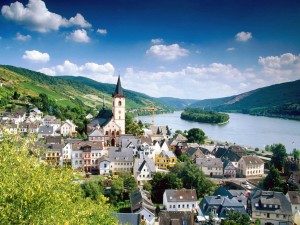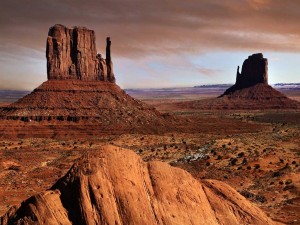September 20th, 2011Tips For Memorable Landscapes
How often during our travels have we seen stunning scenery that we thought would make an amazing picture, but lacked the confidence and knowledge to capture it? Have no fear, because getting great landscapes with digital cameras is more a matter of being in the right place at the right time than having great technical knowledge.
Vantage point: Depending on what you are taking a photo of, a high vantage point is usually the best place to be. As with the rules of composition, you want to fill the frame as best you can with the subject, so get as close as possible to it. Trying a couple of different vantage points to get the best shot can also be time well spent.
Understand your camera’s settings: Most brands, such as Canon cameras, have an automatic landscape setting that eliminates much of the guesswork. Use this setting as a starting point and take note of such things as the aperture and shutter speed. Switch to manual settings and play around a bit either side of the information produced by the automatic settings. Quite often a little tweaking will help with the end result.
Try different times of the day: If time is on your side, experiment in the morning, middle of the day and late afternoon. You will find the different light cast by the sun can have a dramatic difference on the colours and contrast of your subject.
Use a tripod: Not only will a tripod keep the camera steady, but it will also allow you to maintain great composition. It will also enable the use of the camera’s timer in case you want to jump in the photo as well.
Choose a foreground: With distance often a factor in landscape photography, there can be wasted space in the foreground that can detract from the subject. So it’s best to choose something that adds interest to the image while at the same time not stealing the limelight from the hero of the photo. For example, if a mountain in the distance is your subject, use some rocks in the foreground or a body of water to add depth.
Don’t be scared to edit: While the image you see through the viewfinder may be pretty good, some cropping and editing once the image has been downloaded onto a computer can transform a picture. If you’re serious about scenery, a good photo editing program is a must. Cropping out sky or fixing up contrast problems will make a world of difference. Just remember to keep a copy of the original image in case you are unhappy with the results of your editing.
Try a wide angle lense: While the standard lenses that come with digital SLRs these days are great allrounders, a wide angle lense is a must for serious photographers who want to get the most out of their landscapes. These have a relatively small focal length, the opposite to zoom lenses, and can take in a large field of vision. While they can be costly, the results are worth it.
Get off the beaten track: It’s not always going to be the case that you can just stop at the side of the road and get a great picture. So without putting your safety at risk, consider rolling up your pants and making a path to a more out-of-the-way location where you will be rewarded with a completely different aspect of your subject.


